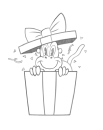Creating depth on a flat piece of paper is a fundamental challenge in art. To trick the eye into seeing a third dimension, you can use five key techniques:
Diminution
Things get smaller as they go away. Objects appear smaller the farther they are from the viewer. Using size to indicate distance makes elements seem more distant. Remember, closer equals bigger, farther equals smaller.
Convergence
Parallel lines meet at vanishing points. When lines recede into space, they converge at a point on the horizon. This is the basis of one-point, two-point, or even multiple-point perspective. Convergence helps you lay out scenes with depth by aligning lines toward vanishing points.
Foreshortening
Looking along a thing changes its shape. A long object appears shorter when one end is closer to you. Foreshortening can be tricky, but mastering it adds a convincing sense of three-dimensionality to your drawings. Practice drawing objects from different angles to understand how their proportions change.
Overlap
Close covers distant. Overlapping elements show which objects are in front and which are behind. This simple trick creates depth instinctively. It's widely used, from children's drawings to cartoons, and is essential for depicting figures and natural forms.
Atmosphere
Distant things fade. Also known as aerial perspective, this technique uses the effects of air and atmosphere. Distant elements may appear lighter, darker, bluer, or grayer. Adjusting tones and colors can enhance the sense of depth in your artwork.
* * *
Refer to this list when composing your drawings. You don't have to use every trick in each piece. Sometimes, adding or removing one can improve your design. Experiment to find what works best for your art.
Upgrade to premium now to unlock more perspective lessons from Marshall!
- Review Your Favorite Images: Go through your collection of favorite images.
- Evaluate Depth Techniques: Use a 1 to 5 scale to rate how well each image applies to each of the five depth tricks:
- Diminution (smaller objects appear farther away),
- Convergence (parallel lines meet at vanishing points),
- Foreshortening (objects look shorter when viewed from an angle),
- Overlap (closer objects cover parts of farther ones),
- Atmosphere (distant objects fade or change color due to air or light).
- Share Your Analysis: Post your evaluations below.
- Optional Inspiration: Look at old comic strips to see how cartoonists use perspective for inspiration and give them a rating.
This exercise will help deepen your understanding of how these techniques are used to create the illusion of depth on a flat surface.
Deadline - submit by Dec 04, 2024 for a chance to be in the critique video!






